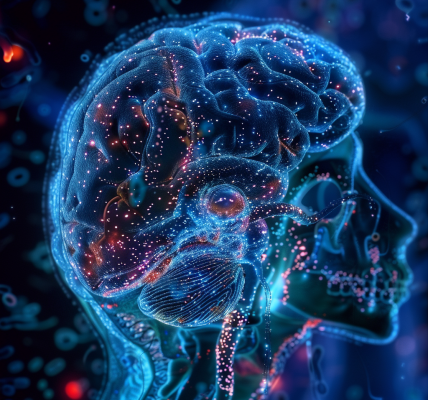Nobel Prize winner John Jumper, whose groundbreaking work in chemistry earned him the prestigious award in 2024, has shared insights into his unexpected journey in the field. Jumper’s path to becoming a leading figure in protein folding research began at the University of Chicago, where he initially faced a steep learning curve.
When Jumper first enrolled in the Ph.D. program in chemistry, he candidly admitted, “When I started, I knew no chemistry. None.” This lack of foundational knowledge did not deter him; instead, he committed himself to an intensive learning process, managing to stay one week ahead of the undergraduate general chemistry class he was teaching as a teaching assistant.
Interestingly, Jumper’s academic interests initially lay in physics. However, after pursuing a Ph.D. in physics and feeling unfulfilled, he pivoted towards a career that allowed him to combine his programming skills with scientific inquiry. He took a position at a company focused on computational modeling of proteins, which ignited his fascination with the complexities of protein structures.
Jumper’s work in this area revealed to him the profound implications of protein folding on human health. He expressed that the realization of how his research could lead to tangible benefits, such as improving hospital outcomes, was a significant motivator. This pivotal moment led him to pursue a Ph.D. in chemistry at the University of Chicago, where he collaborated with esteemed professors Karl Freed and Tobin Sosnick.
His research aimed to tackle a fundamental question that has puzzled scientists for decades: how do proteins fold? This question is not merely academic; proteins are essential to countless biological processes, performing various functions in the body, from transporting oxygen in the bloodstream to facilitating neural communication.
Proteins are composed of 20 different amino acids, which combine in unique sequences to perform specific tasks. The folding process of proteins is complex and occurs spontaneously, with each protein instinctively knowing how to achieve its functional shape. Jumper’s inquiry into this phenomenon sought to bridge the gap between understanding the individual components of proteins and grasping the overall folding process.
Despite advances in DNA sequencing technology that allow scientists to identify the amino acid sequences of proteins, predicting how these sequences will fold remains a daunting challenge. The number of potential configurations for any given protein far exceeds the number of stars in the universe, making it nearly impossible to derive a straightforward relationship between genetic information and protein structure.
Jumper’s innovative approach to this complex problem culminated in the development of AlphaFold, a revolutionary program that employs deep learning techniques to predict protein structures with remarkable accuracy. This program has the potential to transform the field of biochemistry and molecular biology, offering insights that could lead to breakthroughs in drug discovery, disease treatment, and a deeper understanding of biological processes.
As an ‘accidental chemist,’ Jumper’s journey illustrates the importance of interdisciplinary collaboration and the value of pursuing one’s passions, even when the path is not straightforward. His achievements serve as an inspiration to aspiring scientists and highlight the profound impact that curiosity and determination can have on the world of science.
With the recognition of his contributions through the Nobel Prize, Jumper stands as a testament to the transformative power of research and the potential for innovative solutions to some of humanity’s most pressing challenges in health and medicine.





